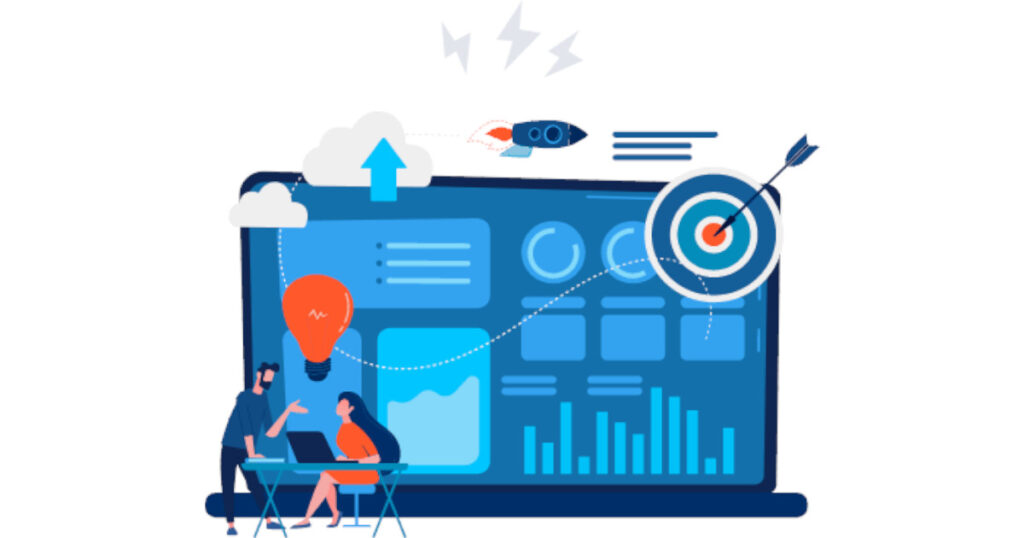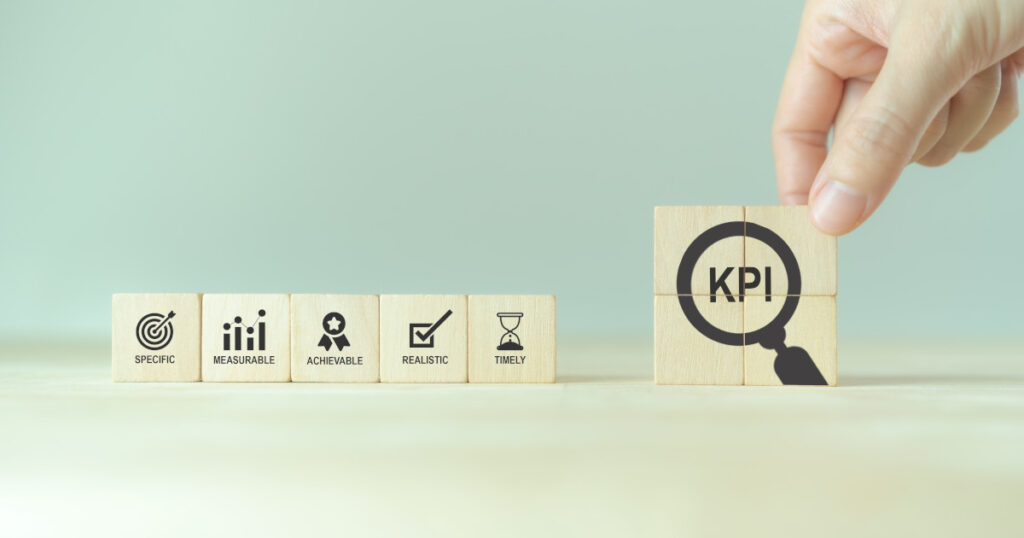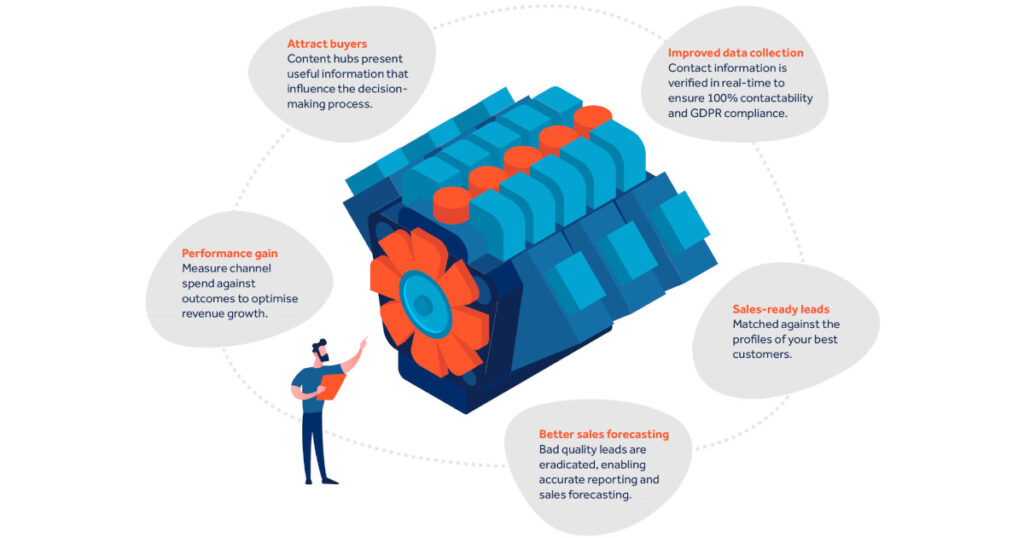B2B Lead Generation

Measuring the ROI of Your B2B Demand Generation Strategy
Calculating the ROI (Return on Investment) of B2B demand generation is no simple task.
The complexity arises from the lengthy and multi-touched nature of the B2B marketing funnel.
A potential customer may engage with your brand across various channels and content pieces before eventually converting.
Despite the difficulties, failing to grasp demand generation ROI means flying blind.
Without this crucial metric, B2B marketers can’t intelligently optimize their strategies, double down on what’s working, or cut losses on underperforming campaigns.
Accurately measuring ROI empowers data-driven decision-making that maximizes marketing investment.
Understanding the Complexity of B2B Demand Generation ROI
The ability to effectively measure costs and ROI from lead generation activities is a significant challenge.
This is cited by 32% of respondents from the State of B2B Lead Generation report as one of their top three issues.
In this comprehensive guide, we’ll explore advanced methodologies for calculating B2B demand generation ROI.
We’ll look into the nuances of attribution models, examine powerful metrics beyond basic lead and conversion counts, and outline practical steps for continuous measurement and optimization.
Mastering ROI unlocks the ability to truly understand the impact of your B2B demand generation efforts.
Defining ROI in the Context of B2B Demand Generation
At its core, a B2B demand generation strategy focuses on sparking interest and creating demand for a company’s products or services among potential buyers.
Unlike traditional lead generation tactics that cast a wide net, demand gen takes a more targeted approach to identify and engage the right audiences.
A crucial difference is that demand generation isn’t just about generating leads, but rather about nurturing prospective customers through the entire marketing funnel.
It involves creating awareness, positioning your brand as a thought leader, and providing valuable content that educates and guides buyers through their journey.
As Forrester highlights, modern B2B purchases are incredibly complex, often involving multiple decision-makers across different departments.
In this landscape, a well-executed demand gen strategy aligned with sales efforts becomes paramount for better conversions and larger deal sizes.
Gartner reinforces this, stating that a strong demand generation program cultivates brand authority and leverages thoughtful, engaging content to drive interest and prospect nurturing.
This is about more than just lead volumes – it’s about generating qualified demand primed for conversion.

The Evolution of ROI Metrics in B2B Marketing Efforts
Historically, B2B marketers primarily focused on top-of-funnel metrics like website traffic, email open rates, and basic lead counts when measuring ROI.
However, the rise of demand generation has necessitated a shift towards more nuanced, bottom-line-impacting key performance indicators (KPIs).
As the buying journey grows increasingly complex, rudimentary metrics fail to provide the full picture.
The modern benchmarks for calculating demand gen ROI dig deeper to isolate process efficiencies, conversion rates, pipeline impact, and ultimately, revenue influence.
Setting Advanced KPIs for Measuring Success
As B2B marketers shift their focus toward demand generation, relying solely on basic metrics like website traffic or lead volumes is inadequate.
To truly understand the impact of your strategies and calculate an accurate ROI, you need to embrace advanced KPIs that provide a comprehensive view of your demand gen performance.
Identifying Key Metrics for Measuring Demand Generation ROI
While top-of-funnel metrics have their place, progressive B2B organizations are honing in on strategic measurements that directly correlate to revenue.
As highlighted by Google’s research, 89% of leading marketers utilize bottom-line indicators like gross revenue, market share, and customer lifetime value.
To properly assess demand gen ROI, you need insight into metrics spanning the entire sales funnel and conversion path.
Essential KPIs include:
- Marketing Qualified Lead (MQL) to Sales Qualified Lead (SQL) conversion rate
- SQLs generated by specific campaigns/channels
- Pipeline value influenced by marketing
- Marketing’s impact on customer acquisition costs
- Overall revenue influenced
Tracking these demand generation metrics illuminates your ability to drive quality leads, nurture prospects, and ultimately contribute to sales and revenue goals.

The Role of Marketing Qualified Leads (MQL) and Sales Qualified Leads (SQL) in ROI Analysis
As you analyze demand gen performance, the concept of lead quality becomes paramount over sheer lead quantity.
This is where the standard of MQLs and SQLs provides pivotal insight.
An MQL represents a lead that has firmly raised their hand by engaging with your marketing content or exhibiting behaviors that align with your ideal buyer profile.
SQLs take this a step further by meeting precise criteria for sales-readiness.
Monitoring MQL to SQL conversion rates, and tracking SQLs generated by specific marketing campaigns, enables you to calculate the ROI of your demand gen efforts in creating sales-ready pipeline.
It also allows you to reverse engineer your process to double down on the strategies producing the highest quality leads.
Cost Per Acquisition (CPA) vs Cost Per Lead (CPL): Which Is More Crucial for B2B?
Both CPL and CPA metrics are crucial for measuring the ROI of B2B demand generation activities, albeit in different ways.
CPL provides valuable insight into the efficiency of your lead generation and nurturing efforts.
It calculates the marketing investment required to acquire each new lead entering your funnel.
Tracking CPL at a granular level allows you to identify which campaigns and channels are most effective for cost-efficiently filling your pipeline with prospects.
However, CPL alone doesn’t account for whether those leads ultimately convert into revenue-generating customers.
This is where CPA becomes an essential ROI benchmark, especially for B2B companies making larger, more considered purchases.
CPA reflects the total marketing spend required to acquire each new customer. It maps your demand generation activities and costs to new revenue generated.
For big-ticket B2B sales, CPA aligns your marketing strategies with the fundamental goal of acquiring new business in a cost-effective manner.
That said, CPL shouldn’t be disregarded, as it ensures your demand gen budget is utilized efficiently for lead acquisition.
CPL optimizes your lead generation engine and nurture programs, while CPA calculates your marketing return relative to new revenue acquired.
Leveraging Analytics to Track and Optimize Demand Generation Performance
Of course, capturing the data required for these demand gen metrics necessitates sophisticated analytics and tracking capabilities.
Tools like Google Analytics provide unparalleled insight into the customer journey, allowing you to map website behavior, conversion paths, and revenue sources.
Additionally, campaign tracking UTM parameters, combined with a CRM integration, enables closed-loop funnel analysis to pinpoint your most effective demand gen channels and strategies.
Armed with this level of analytics, you can continually optimize your efforts and spend for maximum ROI based on real data.

Integrating Data-Driven Decision Making
With the breadth of data and advanced metrics now available, B2B marketers have an incredible opportunity to adopt a truly data-driven approach to demand generation.
However, effectively utilizing this wealth of insights requires the right processes, tools, and organizational alignment.
Optimizing Demand Generation ROI through Marketing Automation
Marketing automation platforms have become indispensable for data-driven demand gen.
These tools provide centralized management of campaigns across multiple channels, precise targeting capabilities to reach your ideal audience, and intricate tracking to map the entire lead lifecycle.
Features like lead scoring, behavior tracking, and campaign analytics enable you to continually optimize your demand generation efforts for maximum ROI.
You can identify the characteristics of your highest-converting leads, the messaging that resonates, and the touchpoints that accelerate prospects through your funnel.
Leveraging automation empowers agile campaign optimization based on real-time performance data.
You can quickly double down on your most impactful strategies while reallocating spend from underperforming initiatives.
The Importance of Sales and Marketing Alignment in Measuring ROI
However, marketing can’t go it alone when it comes to calculating true demand generation ROI. Tight alignment between marketing and sales teams is critical to bridge the data gap.
By collaborating on ideal customer profiles, defining marketing qualified leads, and continually sharing performance insights, you create a cohesive demand engine optimized for ROI.

Unifying marketing and sales through shared processes and integrated tech stacks empowers true sales enablement.
With full-funnel transparency, marketing can generate higher-quality leads and provide contextual intelligence to sales for more effective prospect engagement.
This allows marketing to iterate and enhance content, messaging, and campaigns for improved demand generation performance.
Advanced Techniques for Measuring ROI
As B2B marketers face increasing pressure to prove ROI and drive profitable growth, they must push beyond basic metrics to truly understand the impact of their demand generation efforts.
By incorporating advanced measurement techniques that account for long-term value and indirect brand benefits, marketers can unlock a comprehensive view of ROI that guides strategic decision-making.
Beyond Basic Metrics: Incorporating Lifetime Value and Brand Impact
In today’s challenging economic climate, CMOs are under immense pressure to drive profitable growth with limited resources.
A recent Gartner survey found that 75% of marketing leaders face increased expectations to “do more with less”.
Consequently, 86% of marketers stated they must make significant changes to how the marketing function operates to achieve sustainable results.
In this environment of fiscal constraints, it’s more crucial than ever for B2B marketers to take a comprehensive, long-term view when measuring the ROI of their demand generation efforts.
While metrics like cost-per-acquisition are crucial ROI indicators, they don’t tell the full story.
To calculate long-term ROI, you need to factor in customer lifetime value (CLV).
Which is the projected revenue a customer will generate across their entire relationship with your company.
By analyzing key characteristics that influence CLV, you can model this metric for different audience segments.
Some critical factors to consider when modeling CLV include:
- Profitability levels of different customer tiers
- Revenue from upsells and cross-sells
- Projected revenue growth of each segment
- Churn rates and churn likelihood
- Customer acquisition costs
- Average customer lifespan
- Customer retention rates
Incorporating CLV modeling provides a more comprehensive view of marketing ROI that looks beyond the initial customer acquisition.
Additionally, demand generation campaigns inherently build brand equity through increased awareness and positive associations.
Methodologies like brand tracking studies can shed light on shifting perception to estimate the ROI of your demand strategies.
Using Funnel Analytics to Understand Generation Performance
Optimizing long-term demand gen ROI requires a granular understanding of your marketing funnel’s performance.
Funnel analytics provide this level of insight by dissecting the metrics, transitions, and conversion rates for each funnel stage.
Funnel analytics provide the ability to:
- Identify bottlenecks where leads are falling out of the funnel, informing where to focus nurture efforts
- Pinpoint your most effective channels for driving quality leads into the top of the funnel
- Calculate ROI at each successive funnel stage to isolate your most valuable marketing touchpoints
This detailed funnel visibility enables data-backed optimization across every phase of the buyer’s journey.
Predictive Analytics: Forecasting Success in Demand Gen Campaigns
As you amass historical performance data, you can leverage that insight to forecast future outcomes through predictive analytics modeling.
Machine learning algorithms analyze variables like audience attributes, content topics, channel mix, and more to predict engagement and conversion rates.
This allows you to proactively plan campaigns predicted to deliver the highest ROI based on your specific goals.
You can model scenarios to determine the ideal budget and resource allocation across different acquisition channels, content assets, and demand capture strategies.
Predictive analytics turns your data into a competitive advantage for proactive planning, removing guesswork from your demand generation investment decisions.
You can strategically align budget behind the initiatives forecasted to yield optimal marketing ROI.

Practical Steps for Measuring and Enhancing ROI
While advanced measurement techniques unlock powerful insights, the foundation of optimizing demand generation ROI still relies on consistent tracking, analysis and a data-driven testing mindset.
By implementing the right processes and martech stack, you can continuously capture the metrics that matter most and utilize that data to methodically enhance results.
Tracking and Analyzing: The Foundation of Successful Demand Generation
Each piece of your martech stack plays a role in data unification – combining detailed user-level behaviors with campaign insights and revenue outcomes.
With this unified cross-channel view, you can analyze the metrics that indicate ROI like conversion rates, sales cycles, SQLs generated and overall pipeline influence.
Establish KPIs, define processes for analysis, and ensure stakeholders across marketing and sales understand how to interpret and apply the findings.
Optimizing Your Funnel: A Step-by-Step Guide to Higher ROI
With tracking and reporting serving as your centerpiece, you can begin optimizing each stage of the demand generation funnel for maximum ROI:
- Attraction: Invest in the top-of-funnel channels and content driving the most qualified traffic and lead volumes at a reasonable CPL.
- Engagement: Identify the messaging, assets and nurture cadences that accelerate lead scoring and MQL to SQL conversion.
- Evaluation: Streamline your processes for routing high-fit, sales-ready leads to reps quickly. Iterate on sales enablement content.
- Purchase: Analyze your sales cycle metrics and pipeline influence to calculate marketing’s revenue impact and CPA.
- Retention/Expansion: Nurture existing customers with cross-sell/upsell marketing to maximize CLV.
This systematic funnel approach illuminates your crucial leverage points while guiding investment towards your highest-ROI demand strategies.
The B2B Lifecycle Strategy: Nurturing Leads for Optimal Conversion
For B2B brands making larger, more complex sales, effectively nurturing prospects is vital for long-cycle conversion and maximizing ROI.
This is where your content marketing strategy across different channels becomes paramount.
Start by mapping your goal content assets to each stage of the typical buyer’s journey.
From awareness-level thought leadership to middle-funnel product education to bottom-funnel sales enablement, ensure you’re providing the right information at the right time.
Through attentive lead nurturing aligned with your evolving demand gen funnel, you accelerate prospects towards conversion while building positive brand affinity.
This maximizes your chances of winning new business from your hard-earned marketing ROI.

Conclusion
Effectively measuring and optimizing demand generation ROI will only grow more essential for organizations striving to stay ahead of the competition.
By embracing emerging trends and new technologies, forward-thinking marketers can future-proof their ability to quantify the true impact of their efforts.
The Future of Measuring B2B Demand Generation ROI
Several key areas are shaping the future of demand gen ROI measurement:
- Data Integration & Intelligence: As marketing tech stacks grow increasingly complex, solutions that enable unified data intelligence across disparate systems will be critical. This holistic visibility allows for precise, multi-touch attribution and ROI analysis.
- Predictive Analytics: By combining historical performance data with AI/machine learning models, marketers can move beyond backwards-looking reporting. Predictive analytics will allow them to forecast future demand gen performance and ROI to proactively optimize investment decisions.
- Account-Based Measurement: There is a rising need to calculate ROI at the account level, not just for individual leads or opportunities. This aligns with the growing emphasis on account-based marketing and sales strategies.
- Omnichannel Attribution: As prospects engage across an increasing number of traditional and digital channels, marketers require omnichannel attribution capabilities to connect ROI back to each touchpoint, message, and experience along the buyer journey.
By staying abreast of these emerging trends, B2B organizations can ensure their ability to accurately measure the effectiveness of their demand generation programs keeps pace with their evolving strategies.
Key Takeaways for B2B Marketers Looking to Maximize ROI
While the future will bring new ROI measurement opportunities, there are timeless best practices that B2B marketers should embrace:
- Invest in integrated systems for unified data analysis across marketing, sales, and customer channels
- Move beyond simplistic metrics to multi-touch attribution modeling focused on pipeline, revenue, and CLV
- Nurture prospects with tailored, insight-driven content and messaging aligned to each funnel stage
- Foster tight sales and marketing alignment for seamless lead handoffs and visibility into deal progression
- Maintain an agile, testing mindset – continuously optimize your strategies based on what ROI data reveals
Perhaps most importantly, view ROI measurement not as a static reporting exercise but as an ongoing cycle of data-driven optimization.
The most effective B2B marketers will be those who embrace the ROI analytics process as an integral part of enhancing the overall effectiveness of their demand generation engine.
FAQs (Frequently Asked Questions)
How Do You Measure ROI in B2B?
To accurately measure ROI in B2B marketing, you need to go beyond simplistic metrics like leads generated or website traffic.
Key steps include:
- Implement integrated systems to unify data across marketing automation, CRM, website analytics, etc.
- Calculate multi-touch attribution to connect marketing efforts to pipeline, revenue influenced and new customers acquired
- Model customer lifetime value (CLV) to measure long-term ROI beyond just acquisition costs
- Analyze micro-metrics like conversion rates at each funnel stage to identify optimization opportunities
- Foster tight sales and marketing alignment to measure impact through to closed/won revenue
What Are the Indicators of Successful Demand Generation?
Signs of an effective B2B demand generation engine include:
- A high rate of converting quality Marketing Qualified Leads (MQLs) to Sales Qualified Leads (SQLs)
- Low customer acquisition costs (CAC) and high CLV/CAC ratios
- Increasing percentage of revenue/pipeline sourced from marketing
- Content engagement and consumption metrics that correlate with opportunities/wins
- Low funnel stage dropoff rates signaling efficient prospect nurturing
How Can B2B Marketers Improve Cost Per Lead and Acquisition Metrics?
Double down on top performing channels. Optimize lead scoring and nurturing. Test messaging and targeting. Leverage automation for follow-up. Align sales and marketing processes.
Why Is the Sales and Marketing Relationship Critical for ROI Measurement?
Marketing can’t calculate true ROI on their own – tight sales and marketing alignment is crucial for several reasons:
- Connecting early marketing touchpoints/activities to influenced revenue and closed/won deals
- Agreeing on definitions of MQLs and SQLs for accurate funnel measurement
- Enabling feedback loops from sales on quality of leads/opportunities generated
- Sharing insights on content gaps, objections, and evolving buyer needs
- Coordinating nurture flows, sales enablement assets, and handoff processes
Without this alignment and visibility into the full lead lifecycle, marketing ROI calculations become educated guesswork at best.

About the Author
Nick is an experienced Marketing Campaign Manager renowned for steering successful demand and lead generation campaigns for various enterprises. His expertise lies in creating compelling content that strongly resonates with target demographics, effectively promoting lead magnets across diverse channels. Nick's strategic approach to marketing has consistently resulted in enhanced audience engagement and significant lead generation, underscoring his pivotal role in the success of the campaigns he manages.
About the Author

Nick is an experienced Marketing Campaign Manager renowned for steering successful demand and lead generation campaigns for various enterprises. His expertise lies in creating compelling content that strongly resonates with target demographics, effectively promoting lead magnets across diverse channels. Nick's strategic approach to marketing has consistently resulted in enhanced audience engagement and significant lead generation, underscoring his pivotal role in the success of the campaigns he manages.